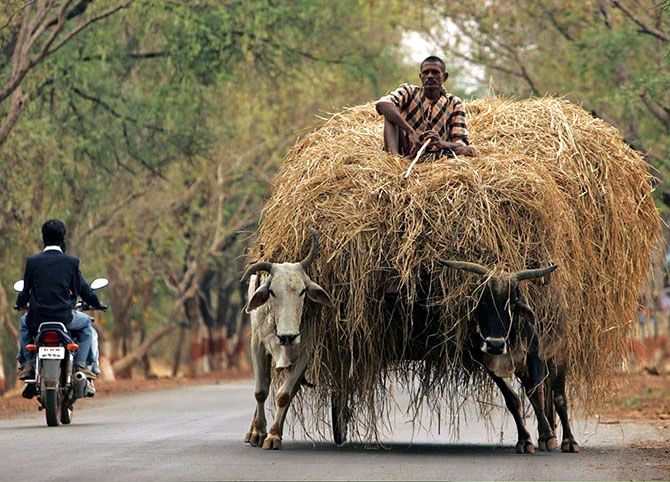RBI Governor Raghuram Rajan said that while there are areas of robust growth in manufacturing such as capital goods and passenger cars, weak rural and external demand holds back stronger overall growth.
 Robust second quarter GDP numbers suggest that the economy is in early stages of recovery, RBI Governor Raghuram Rajan said, but retained his earlier growth projection for the current fiscal at 7.4 per cent.
Robust second quarter GDP numbers suggest that the economy is in early stages of recovery, RBI Governor Raghuram Rajan said, but retained his earlier growth projection for the current fiscal at 7.4 per cent.
As per the Central Statistics Office (CSO), India's GDP accelerated to 7.4 per cent in the July-September quarter, overtaking China as the world's fastest growing major economy, on pick up in manufacturing, mining and services sectors.
Announcing the Fifth Bi-monthly Monetary Policy Statement of the current fiscal, Rajan said provisional estimates of gross value added (GVA) at basic prices for Q2 of 2015-16 rose on the back of acceleration in industrial activity.
"Other indicators suggest the economy is in the early stages of a recovery, though with some areas of continued weakness," he said.
The GVA, a new concept introduced by CSO to measure the economic activity, also accelerated during the second quarter to 7.4 per cent, from 7.1 per cent in the April-June period.
Rajan further said that while there are areas of robust growth in manufacturing such as capital goods and passenger cars, weak rural and external demand holds back stronger overall growth.
Similarly, while prospects for a revival in service sector activity have been boosted by optimism on new business, pockets of lackluster activity such as construction weigh on the overall outlook.
"The step-up in public capital spending and the easing stance of monetary policy provide the enabling environment for a revival in private investment demand, supported by easing input prices and improving conditions for doing business. The growth projection for 2015-16 has accordingly been kept unchanged at 7.4 per cent with a mild downside bias," he said.
Rajan also said the outlook for agriculture is subdued, in view of both rabi and kharif prospects being hit by monsoon vagaries.
Elaborating on the state of domestic economy, RBI said that value-add in agriculture and allied activities picked up on the modest increase in kharif output and timely policy interventions to stem the effects of the deficient south-west monsoon.
Turning to third quarter, it said the north-east monsoon commenced on a listless note, but the subsequent cyclonic weather has improved precipitation and raised the probability of a normal monsoon as predicted by the Indian Meteorological Department.
Nevertheless, the exceptionally dry start to the season affected sowing in all major rabi crops, while the excessive rains that followed may have reduced the prospects of coffee and paddy.
"Overall, the current outlook for agricultural growth in 2015-16 appears moderate at best at this juncture," Rajan said.
Early results of the Reserve Bank's order books, inventories and capacity utilisation survey indicate that there was robust growth in new manufacturing orders in the second quarter, and finished goods inventories declined while raw materials inventories increased.
"Not all indicators, however, are positive. While urban consumption is showing signs of a pick-up in some areas such as passenger vehicles sales, rural demand has been weakened by two consecutive deficient monsoons and slowing construction activity.
"Nevertheless, new project announcements as measured by the Centre for Monitoring Indian Economy grew more strongly in the second quarter. It remains to be seen whether growing public investment can crowd in private investment on a sustained basis, despite the still-low capacity utilisation," the Governor said.
On the performance of services sector, he said lead indicators are mixed.
Recent policy initiatives relating to rail, port and road projects are likely to improve construction activity, as will the Reserve Bank’s countercyclical reduction of capital charges on low income housing loans, albeit with gestation lags.








